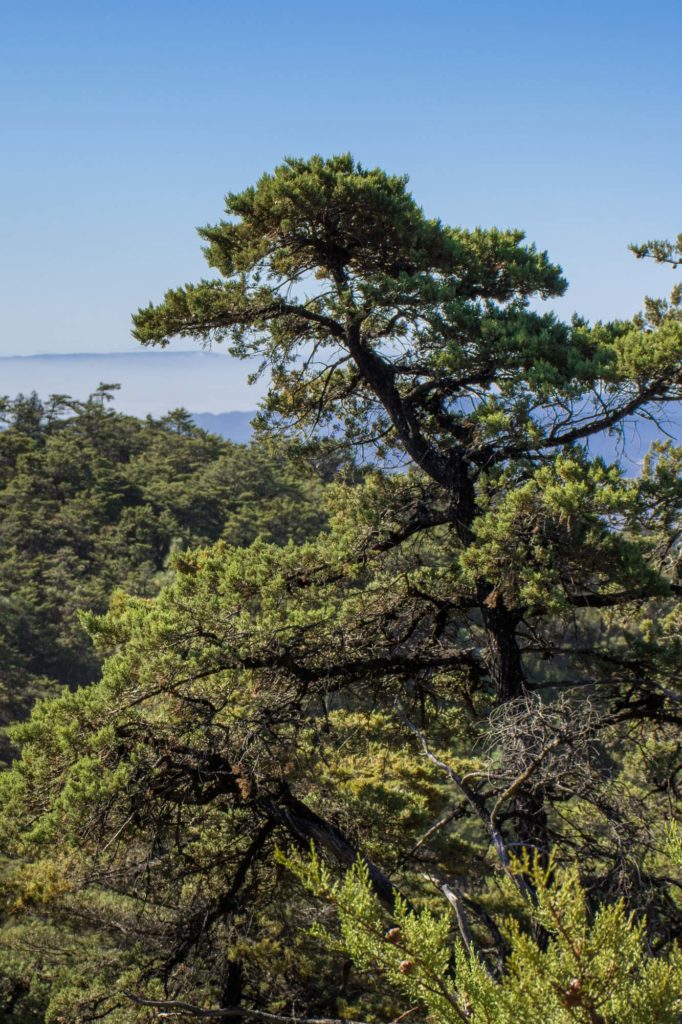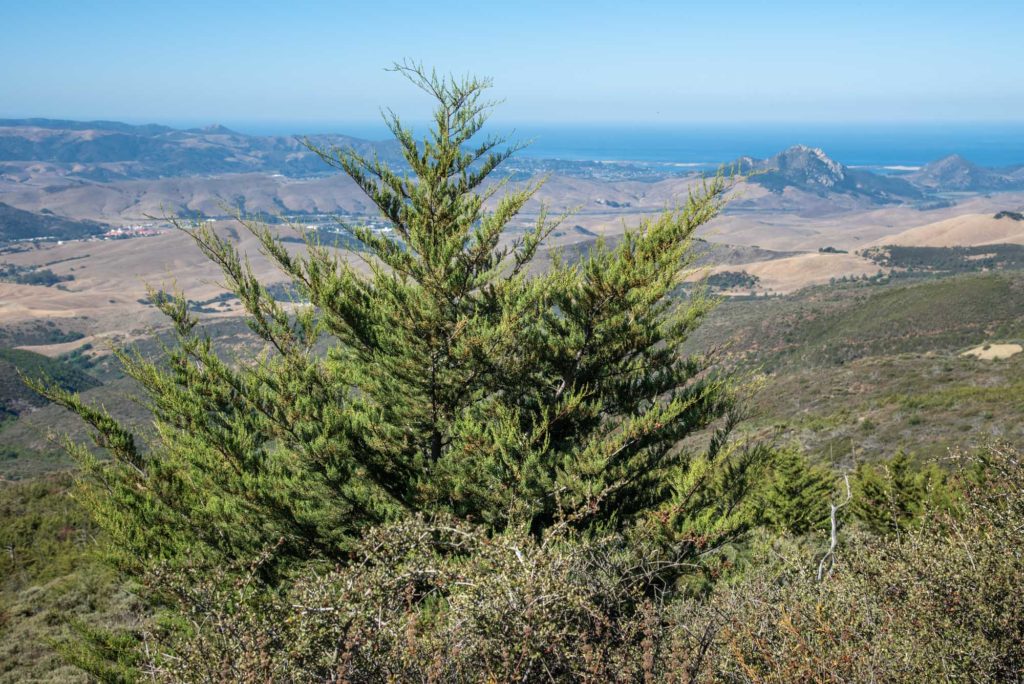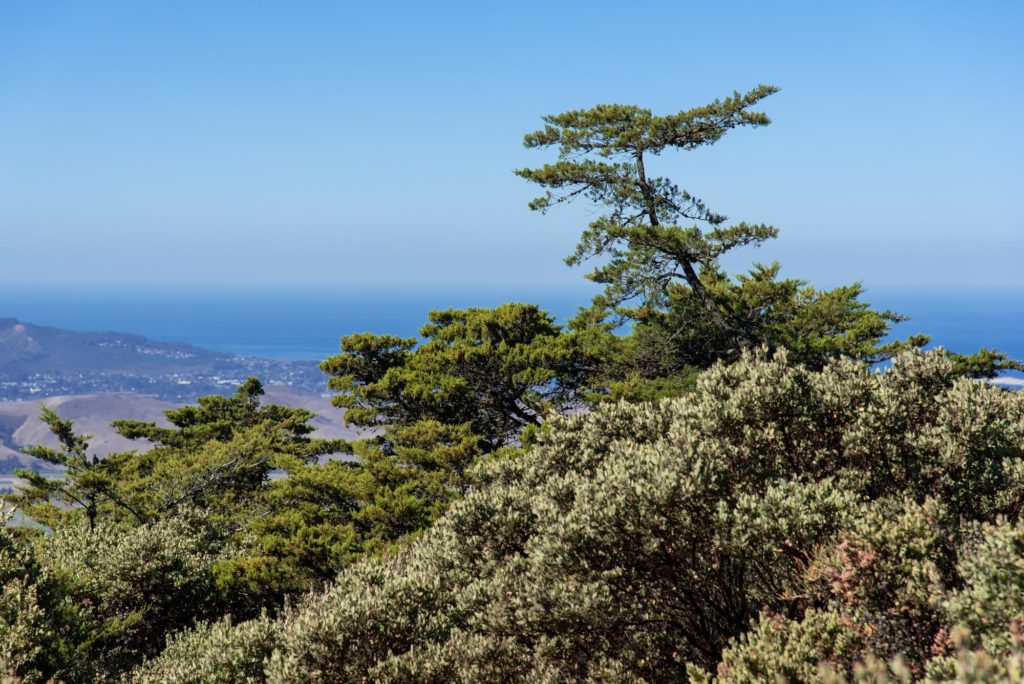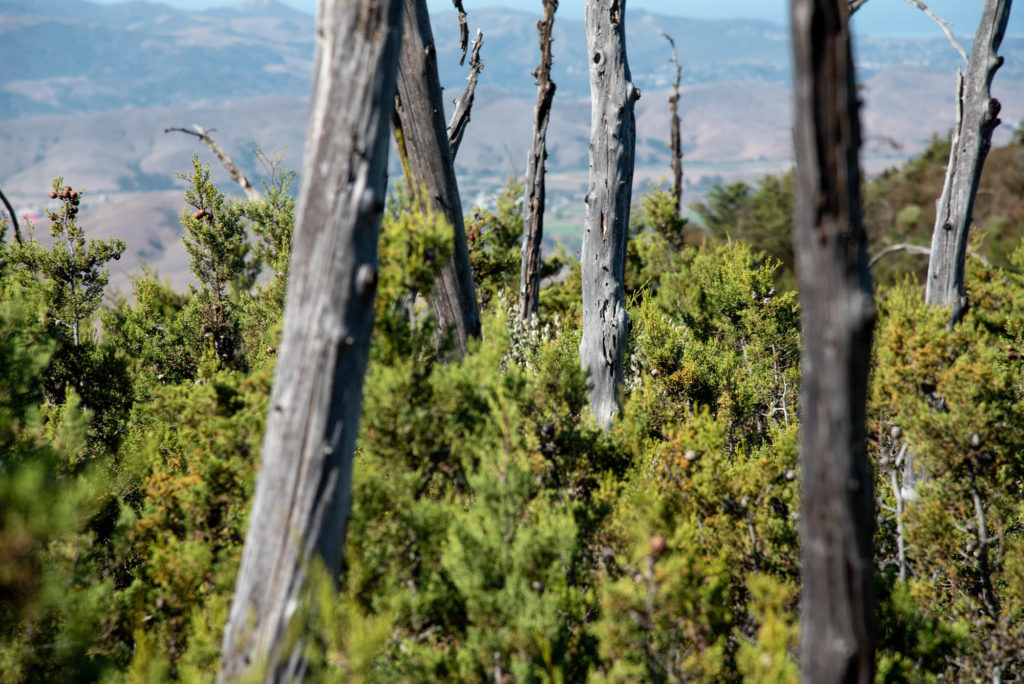
Hesperocyparis sargentii
This beautiful and unique conifer is the only cypress species that grows naturally in the Los Padres National Forest—and even then it can only be found in a few places. Both the common and scientific name for the Sargent cypress (also called Sargent’s cypress) was named in honor of botanist Charles Sprague Sargent (1841-1927), who founded Harvard’s Arnold Arboretum and authored the 14-volume Silva of North America (published from 1891-1902).
Description
As a member of cypress family, this species has scale-like leaves that look similar to the more common California juniper (Juniperus californica) found throughout much of the Los Padres National Forest. The leaves typically don’t have much resin and are not fragrant like many other local conifers. The foliage can be pyramidal or flat-topped, though sometimes it has a rounded appearance.
Sargent cypresses are often short and shrubby, but they can also reach heights of up to 90 feet (and three feet in diameter!) under ideal soil conditions. Trees in the largest stands found in the Los Padres can grow to about 30 or 40 feet tall. The species usually grows in dense stands adjacent to or among chaparral species (such as certain species of manzanita) as well as other conifers such as gray pine (Pinus sabiniana) and Coulter pine (Pinus coulteri). Sargent cypress cones are similar to those of other cypresses. They are small, mostly spherical brown cones that remain tightly closed for many years or until they experience fire (described in more detail below).

Distribution
Sargent cypress has the widest natural distribution of any cypress in California—it can be found in the Coast Ranges from Santa Barbara County to Mendocino County. Despite this wide distribution, the species is limited to small, scattered populations due to its affinity for serpentine soils on foggy ridges.

Specific areas in the Los Padres National Forest with Sargent cypress stands include near Zaca Peak and Figueroa Mountain, along Cuesta Ridge, and in a couple of locations in the Big Sur area’s Silver Peak Wilderness.
Perhaps the best and most accessible stands of Sargent cypress in California are found on West Cuesta Ridge near San Luis Obispo. This unique area in the Los Padres is mostly undeveloped and provides perfect soil and moisture conditions for the species to grow. This expansive population is one of the reasons part of West Cuesta Ridge was designated by the U.S. Forest Service as the Cuesta Ridge Botanical Special Interest Area. There you can find some older stands of Sargent cypress as well as large stands that are only a few decades old.
Fire Ecology
Like many cypresses native to California, Sargent cypress has a fascinating relationship with fire. Generally, its cones do not open without first being exposed to high heat from a wildfire. This heat helps melt resin that keeps the small cones tightly sealed. Once a fire has moved through a Sargent cypress stand (often killing most mature individuals), a carpet of new seedlings comes up in the now sun-soaked ground. The age of an individual stand of Sargent cypress is usually related to the amount of time since it last experienced fire.
Once again, West Cuesta Ridge provides a perfect place to see the effects of fire on Sargent cypress. In 1994, the entire ridge burned in the Hwy 41 Fire. Before that, the area had not experienced a wildfire for many decades. Most of the Sargent cypress stands burned completely, leaving only pockets of older trees that survived the fire here and there. Soon after the wildfire passed through, cones on the fire-killed trees released their long-held seeds. The area quickly became green with countless new seedlings growing across hundreds of acres. When visiting the area today, you can see the skeletons (snags) of trees killed in 1994 scattered among 6-10′ tall trees that have grown since.

Conservation
Currently the Sargent cypress is not listed as a rare, sensitive, threatened, or endangered species. ForestWatch is currently monitoring a proposal to address illegal trail-building on Cuesta Ridge, including in the Cuesta Ridge Botanical Special Interest Area. We have documented Sargent cypress cutting to build unsanctioned trails in the area and are pushing for improved management and enforcement along the ridge.






